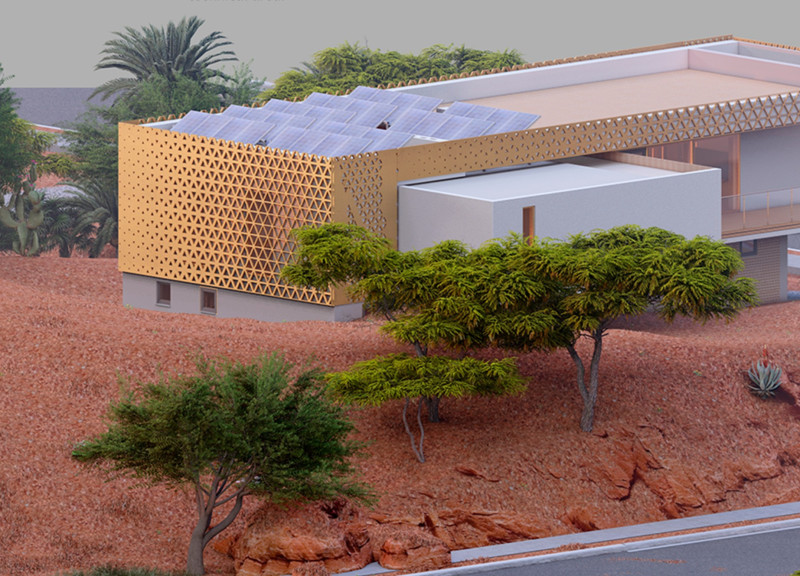5 key facts about this project
This project aims to provide comfortable living conditions while minimizing environmental impact. The spatial organization includes dedicated areas for service activities on the lower level, while the upper level encompasses private and public spaces, including multiple bedrooms, bathrooms, and a large terrace designed for social interaction. The thoughtful arrangement allows for optimal use of natural light and ventilation throughout the living spaces.
Unique Design Approaches
The Pear Sands Villa stands out due to its innovative use of shape and volume, which facilitates passive cooling and mitigates heat gain. The building incorporates a perforated facade made from durable materials that work to reduce reliance on artificial lighting and cooling systems. Such design choices contribute not only to the villa's aesthetic appeal but also enhance its overall energy efficiency.
The integration of environmentally friendly concrete in the structural components enhances durability while providing thermal mass that contributes to temperature regulation. Additionally, the use of bitumen-polymer coatings supports a "cool roof" concept, reflecting sunlight and significantly lowering cooling costs in the interior. This combination of materials exemplifies a strong commitment to sustainable design principles.
Architectural Features and Sustainability
The villa incorporates solar panels as part of its energy strategy, further promoting self-sufficiency. The project also considers water management through rainwater harvesting systems and the use of water-efficient fixtures, aligning with modern sustainability practices.
The design explores flexible spaces, providing the potential for future expansion. This adaptability allows the villa to meet the evolving needs of its residents while maintaining the integrity of the initial architectural vision.
For those interested in a detailed exploration of this project and its architectural components, reviewing the architectural plans, sections, and designs will provide deeper insights into the innovative ideas that define the Pear Sands Villa.


 Maksim Haurylchyk
Maksim Haurylchyk 






















